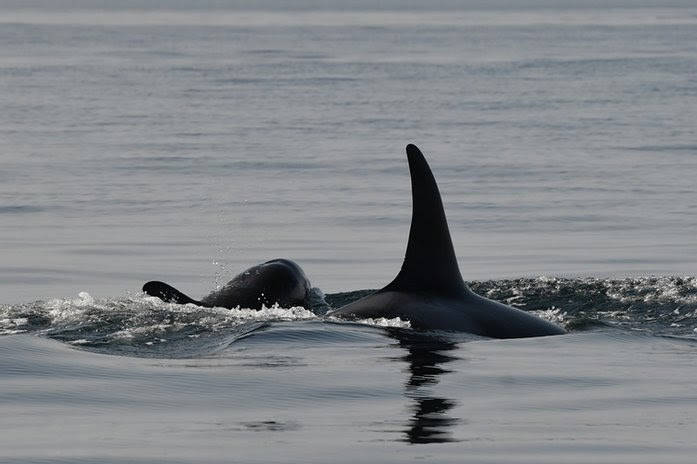Submitted by The Center For Whale Research
J pod was reported near Dungeness Spit in the eastern Strait of Juan de Fuca on Saturday, Sept. 5, another large group of Southern residents was a few miles away near Race Rocks swimming toward them. We thought we might encounter a ‘superpod’ aggregation of J, K, and L pod whales in the inshore waters of the Salish Sea for the first time this year. So we launched three boats with researchers (two from San Juan Island and one from Victoria) to photo-identify every individual for a population census. Usually, we have an accurate census of these charismatic orcas by July 1, but this year, the salmon spawning migrations to the Fraser River have been so poor that the Southern residents have rarely come into what used to be their core summer habitat. A few small groups have ventured inshore in July, and J pod came to San Juan on Sept. 1 and has remained in the general area since then; but, the last time we had some members from all pods was on Jan. 25.
We have had comprehensive encounters with J pod in Haro Strait on Sept. 1 and 3, at which times we monitored pregnant females J35 and J41 very carefully and saw that they had not yet given birth. On Sept. 5, we followed up on a report that a very small calf was seen. Researchers Dave Ellifrit and Katie Jones and guest veterinarian Dr. Sarah Bahan quickly identified the mother as J35, Tahlequah. She made world news in the summer of 2018 when she carried her dead calf on her head for 17 days while the pod traveled about 1,000 miles around the Salish Sea. After an approximate 18-month gestation, her new calf appeared healthy and precocious, swimming vigorously alongside its mother in its second day of free-swimming life. We know that it was not born today because its dorsal fin was upright, and we know that it takes a day or two to straighten after being bent over in the womb. Tahlequah was mostly separate from the other orcas and being very evasive as she crossed the border into Canada, so we ended our encounter with her after a few minutes.
We hope this calf is a success story. Regrettably, with the whales having so much nutritional stress in recent years, a large percentage of pregnancies fail, and there is about a 40 percent mortality for young calves.
With this new calf in J pod, that we designate as J57, the SRKW population now numbers 73, although the official number for July 1 is estimated to be 72. We have to sort through all of the photos to see which whales were alive yesterday, and it follows that they would have been alive on July 1. The July census is used for consistency in comparison with the Northern Resident killer whale population monitored by Department of Fisheries and Oceans Canada.




